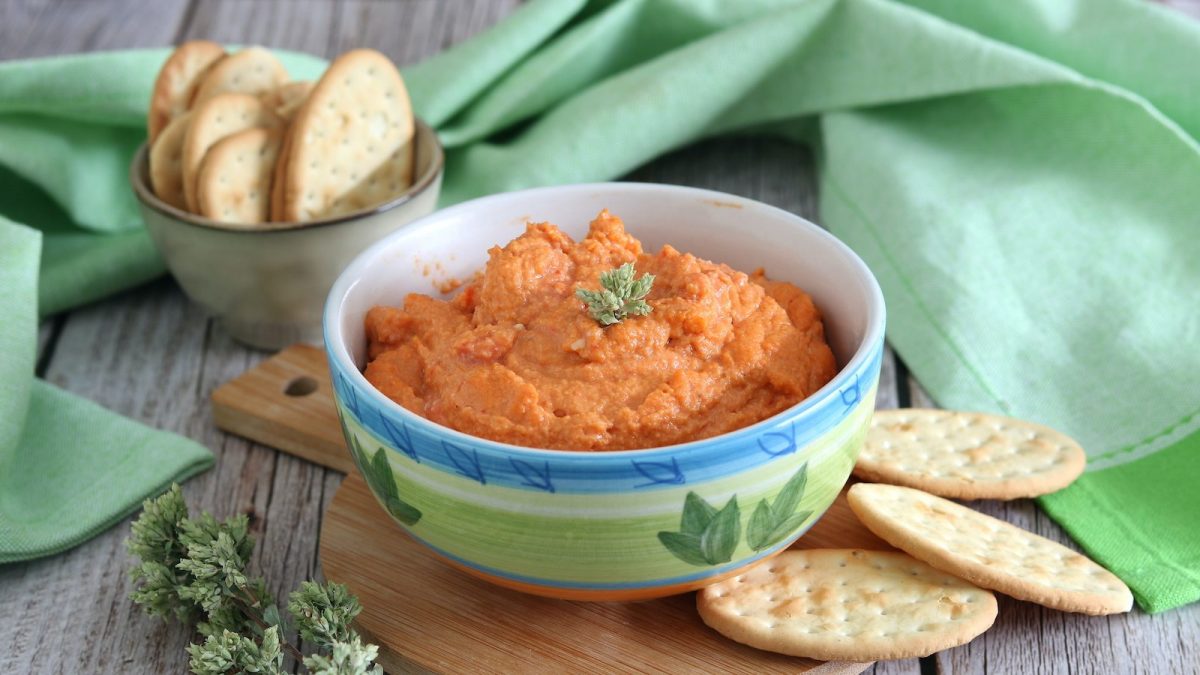
Romesco Sauce is a typical Spanish sauce, originating precisely from Tarragona in Catalonia. With a sweet but strong flavour, it is made with tomato, garlic, dried fruit, chillies, bread and extra virgin olive oil. It is traditionally served with calçots, a variety of grilled onions, but it is perfect to accompany fried foods, meat skewers, seafood and grilled vegetables with a fresh and delicate flavor.
It is said that the fishermen of the area prepared it with a mortar and pestle, and that they ate it with the local catch of the day. Like all traditional recipes, it has numerous variations: some add only almonds or hazelnuts, some use saffron, some do not include tomatoes. What all the versions have in common is the presence of dried ñoras, a variety of local red chili peppers, round and very sweet, and pimientos del piquillo, small peppers characteristic of the area.
Given the difficulty in finding these ingredients, it is possible to replace them with chili powder and classic red peppers. Once roasted together with the tomatoes, they are blended with dried fruit, toasted bread and extra virgin olive oil to create a creamy and smooth sauce that has all the scent of the Mediterranean. Tasty and aromatic, it is also exceptional simply spread on a crunchy cracker or a slice of bread.
What is Romesco Sauce?
Romesco sauce originates from Catalonia, a region in northeastern Spain, and has a rich history deeply tied to its coastal roots. Traditionally, it was a fisherman’s sauce, created by local fishermen who would combine simple, locally sourced ingredients such as tomatoes, almonds, and garlic, often accompanied by roasted red peppers. The sauce was originally crafted to accompany fish, specifically grilled or roasted seafood, but over time, its versatility allowed it to spread to various Spanish dishes. Today, romesco is often served with grilled meats, vegetables, and even as a dip for bread.
The history of romesco sauce dates back at least to the 18th century, with references to its use in the region of Tarragona, near the Mediterranean coast. It is believed that the sauce evolved from earlier versions of Mediterranean pestos, where nuts and olive oil were blended with other local ingredients. Over the years, romesco became a staple in Catalan cuisine, embodying the region's love for bold, savory flavors that balance the natural sweetness of roasted peppers with the richness of nuts and the tang of vinegar. The sauce's hearty consistency and robust flavors have made it a favorite not only in Spain but in many kitchens around the world.
Pro Tips for The Best Romesco Sauce
- The key to a great romesco sauce lies in the freshness of your ingredients, particularly the tomatoes, garlic, and red peppers. Roasting the peppers and tomatoes brings out their sweetness and depth, so take your time to properly char them for that smoky flavor.
- Whether you're using almonds, hazelnuts, or a mix, toasting the nuts before blending them into the sauce adds a rich, nutty depth. Be careful not to burn them—just a light toasting will bring out their flavor without overwhelming the sauce.
- Depending on your preference, you can make romesco sauce thicker or thinner. If it's too thick, add a bit of water or olive oil to achieve the desired consistency, keeping it smooth and easy to drizzle over dishes.
- The vinegar adds acidity and cuts through the richness of the nuts and olive oil. Start with a small amount and taste as you go, adjusting until you achieve a good balance between sweet, smoky, and tangy flavors.
- To get that smooth, creamy texture, make sure you blend the sauce thoroughly. A food processor or blender works best to ensure all the ingredients come together into a perfectly unified sauce.
- Like many sauces, romesco benefits from sitting for a while to allow the flavors to meld together. Letting the sauce rest for at least 30 minutes before serving can enhance its taste.
- While traditional romesco is made with roasted peppers, tomatoes, and almonds, feel free to experiment with other ingredients like a pinch of smoked paprika or a little chili for heat. Adjusting the spice level can tailor the sauce to your taste
What Can I Use Romesco Sauce For?
Romesco sauce is incredibly versatile—it’s perfect for drizzling over grilled vegetables, seafood, or meats, and can also be used as a dip for bread, a topping for roasted potatoes, or mixed into pasta for added flavor.
Why Is My Romesco Sauce so Watery?
Your romesco sauce may be watery if there’s too much liquid from the roasted tomatoes or peppers, or if it wasn't blended long enough to emulsify properly. To fix it, simply simmer the sauce to reduce it or add more toasted nuts to thicken the consistency.
Can I Swap Almonds With Other Nuts?
Yes, you can swap almonds with other nuts like hazelnuts, cashews, or walnuts in romesco sauce. Each nut will bring a slightly different flavor, but the result will still be delicious and rich. Hazelnuts, in particular, are a common alternative and add a nice, slightly sweet depth to the sauce.
Can I Make It Ahead of Time?
Yes, you can make romesco sauce ahead of time. In fact, allowing it to sit for a few hours or overnight helps the flavors meld together.
Does It Freeze Well?
Yes, romesco sauce freezes well. Store it in an airtight container or freezer bag for up to 3 months. When ready to use, thaw it in the refrigerator overnight and give it a good stir. You may need to add a little olive oil to restore its consistency after freezing.
How to Store Any Leftovers
Store leftover romesco sauce in an airtight container in the refrigerator for up to 4–5 days. To keep it fresh, you can drizzle a thin layer of olive oil on top before sealing the container.
Ingredients
How to Make Romesco Sauce
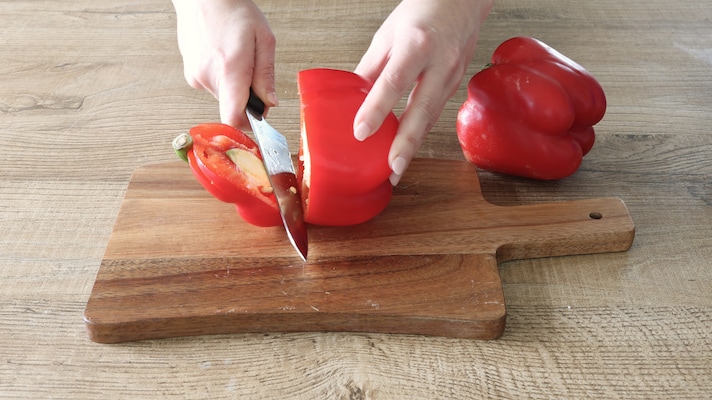
Wash the pepper and tomatoes under cold running water and then dry them with kitchen paper. Cut off the top of the pepper.
Wash the pepper and tomatoes under cold running water and then dry them with kitchen paper. Cut off the top of the pepper.
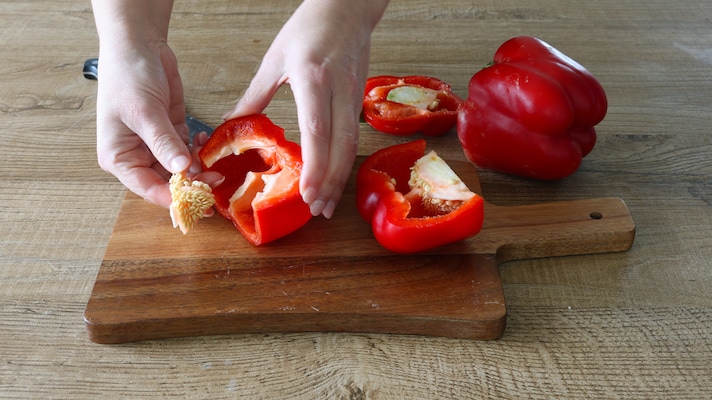
Cut the pepper in half and remove the white filaments and seeds inside.
Cut the pepper in half and remove the white filaments and seeds inside.
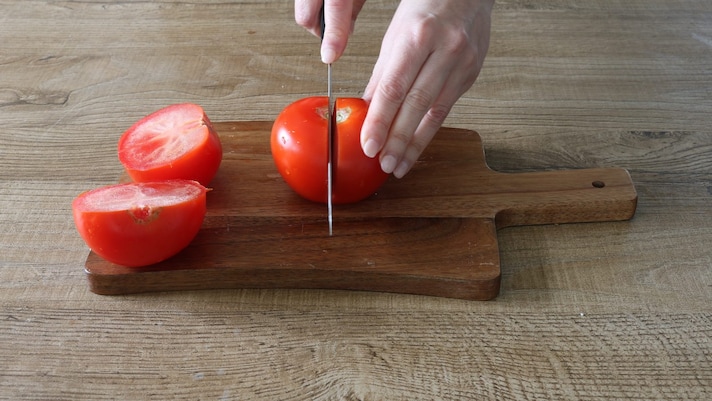
Cut the tomatoes in half.
Cut the tomatoes in half.
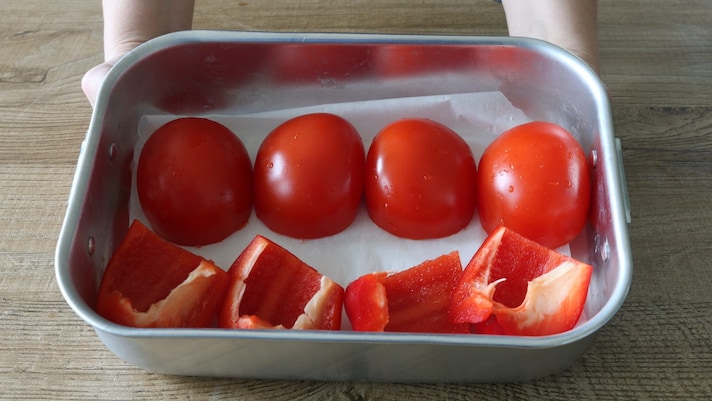
Arrange the tomatoes and pepper in a baking dish.
Arrange the tomatoes and pepper in a baking dish.
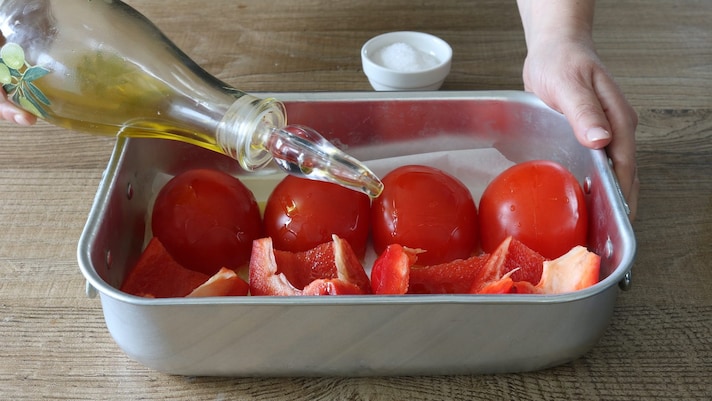
Drizzle with extra virgin olive oil.
Drizzle with extra virgin olive oil.
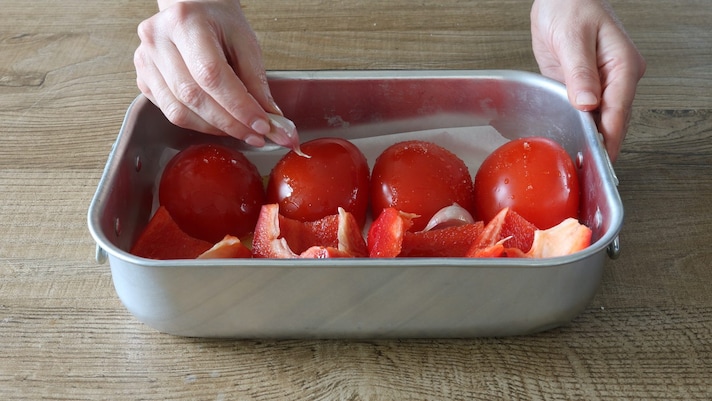
Add the garlic in its skin.
Add the garlic in its skin.
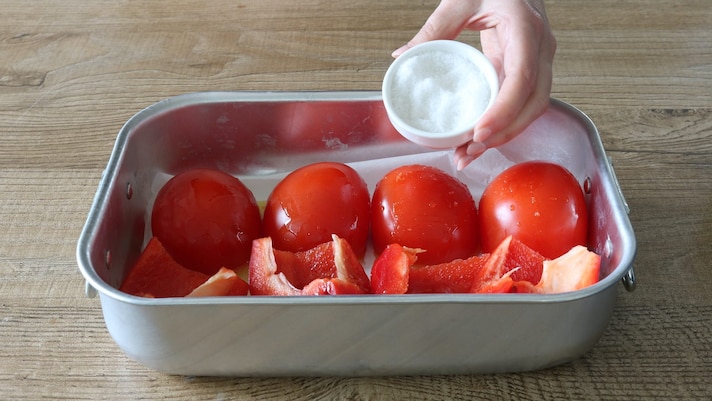
Season with a pinch of salt. Bake the vegetables at 360°F/180°C for about 30 minutes, until they are very soft.
Season with a pinch of salt. Bake the vegetables at 360°F/180°C for about 30 minutes, until they are very soft.
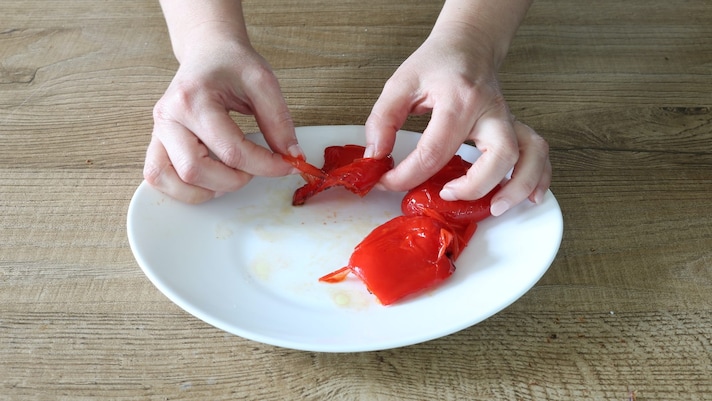
Remove the vegetables from the oven and, being careful not to burn yourself, peel the peppers.
Remove the vegetables from the oven and, being careful not to burn yourself, peel the peppers.
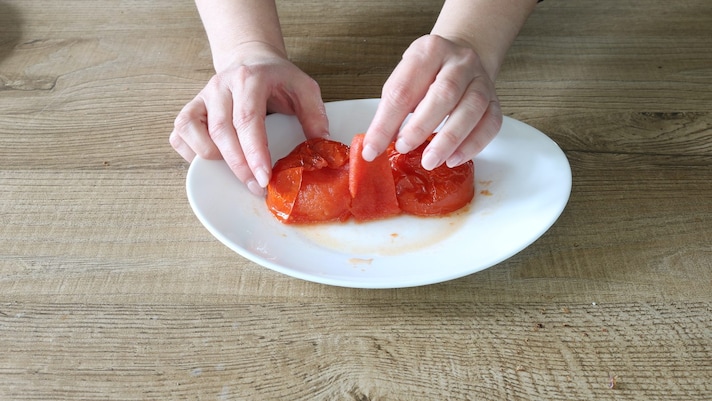
Remove the peel from the tomatoes too.
Remove the peel from the tomatoes too.
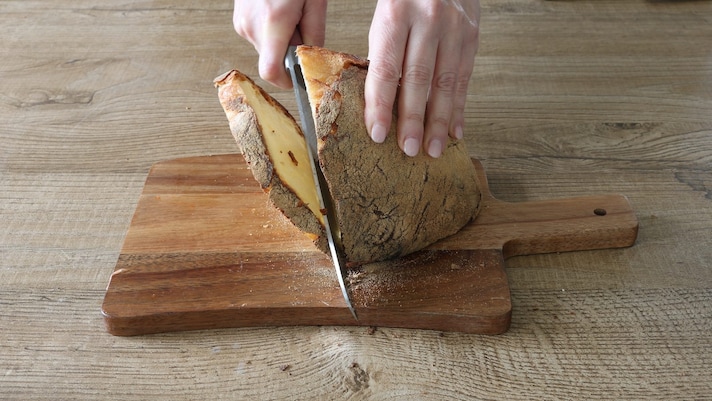
Cut the bread into slices.
Cut the bread into slices.
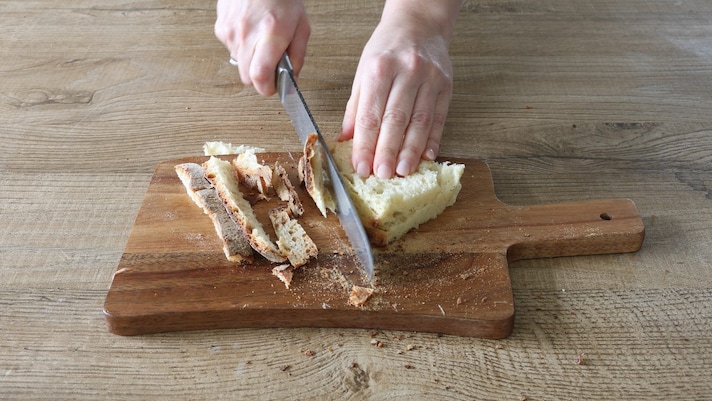
Remove the crust from the bread.
Remove the crust from the bread.
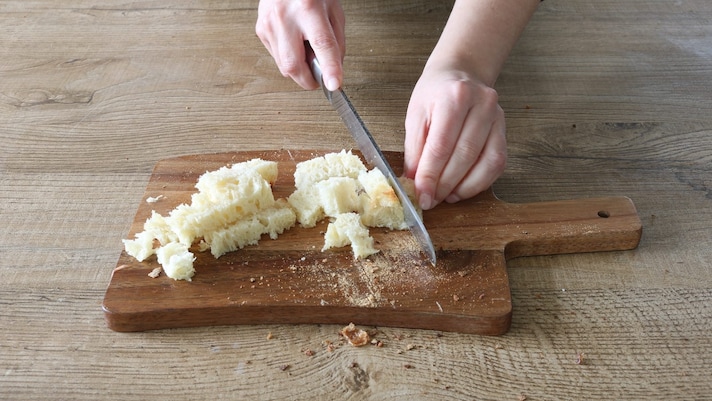
Cut the breadcrumbs into cubes.
Cut the breadcrumbs into cubes.
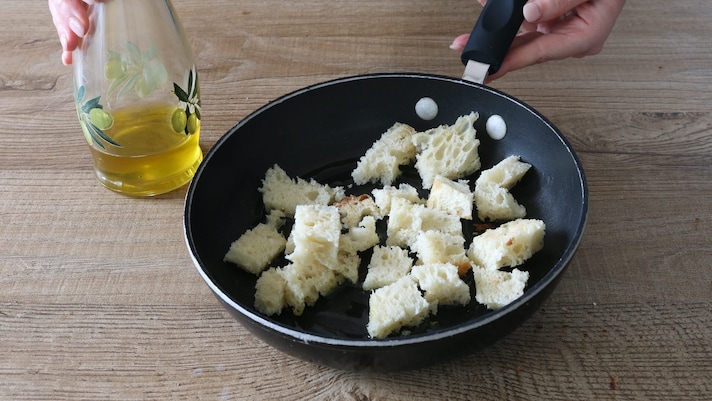
Toast the bread in a pan with a drizzle of extra virgin olive oil.
Toast the bread in a pan with a drizzle of extra virgin olive oil.
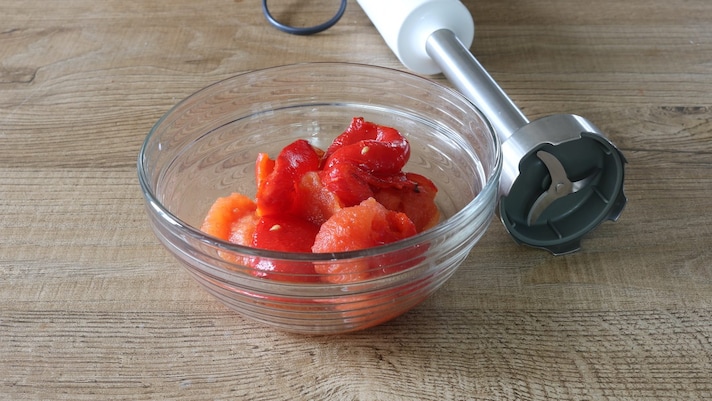
Combine the tomatoes and roasted pepper in a bowl.
Combine the tomatoes and roasted pepper in a bowl.
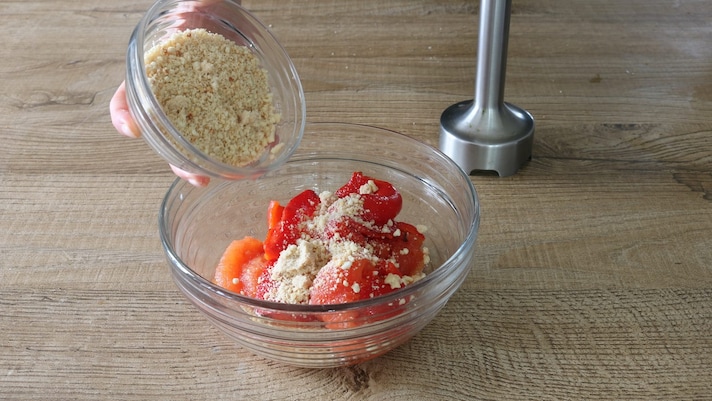
Add the chopped dried fruit.
Add the chopped dried fruit.
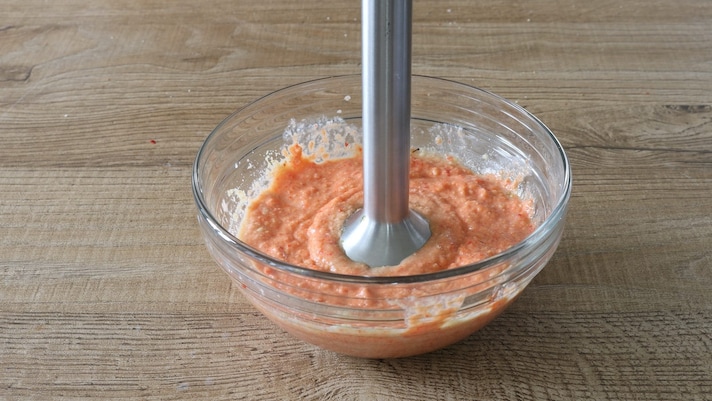
Blend well.
Blend well.
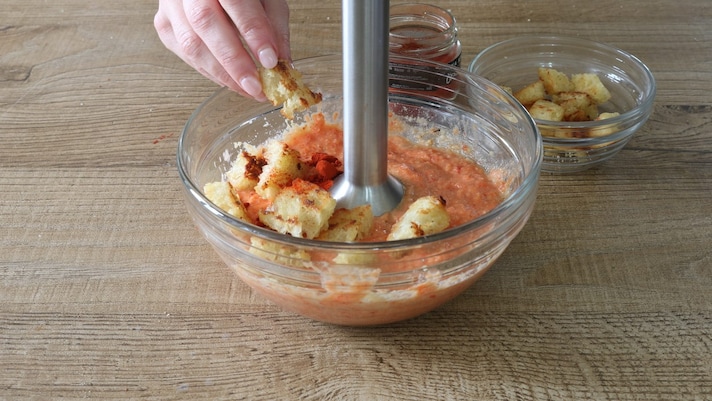
Now add the remaining ingredients: toasted bread, paprika and a drop of apple cider vinegar.
Now add the remaining ingredients: toasted bread, paprika and a drop of apple cider vinegar.
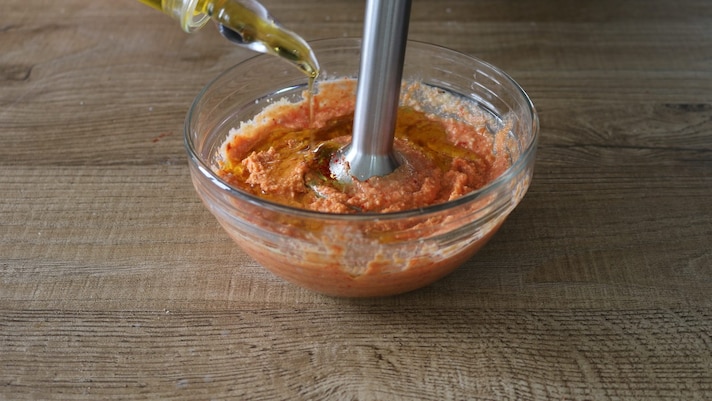
Continuing to blend, slowly pour in the extra virgin olive oil. At the end, you should obtain a creamy and fragrant sauce.
Continuing to blend, slowly pour in the extra virgin olive oil. At the end, you should obtain a creamy and fragrant sauce.
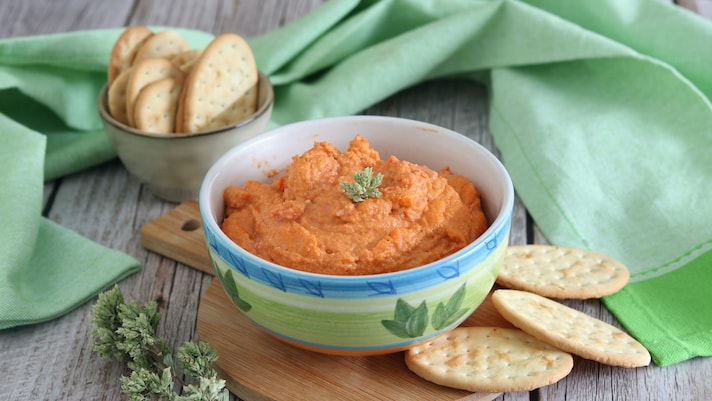
Enjoy!
Enjoy!
;Resize,width=767;)
